Fascinating Finds: a road trip through the pockets of the Eurozone
Who else has started drawing up a destination wish-list and going holiday window shopping in preparation for this year’s adventures?
I know I certainly can’t wait for the holiday season and for me, one of the best things about going abroad is the discovery and experience of new cultures, and that includes foreign currency. As a Change Checker, I’m sure you’ll love looking at the different designs as much as I do, and since each currency is unique to its country, you’ll find there is always a story to tell from the change you find abroad.
In fact, we’ve come across some truly fascinating coins from Europe, so if you’re like me and are already planning your next getaway, make sure you keep an eye out for some of these gems when you jet off…
Spain
An ever popular tourist destination for us Brits is Spain, and I’m sure that the Spanish euro is one that many Change Checkers would recognise. All euros issued before 2015 feature the portrait of King Juan Carlos I who reigned as the King of Spain from 1975 until his abdication in 2014 when his son Felipe VI took over the royal duties. King Juan Carlos I was an interesting Head of State because he was not born in the country he eventually came to rule, his family having been exiled to Italy due to the abolition of the Spanish Monarchy in 1931. However, following a coup d’état in 1936 the dictator Generalísimo Francisco Franco took control of the Spanish government, and 11 years later reaffirmed Spain’s status as a Monarchy. This 2009 2 euro coin designed by Luiz José Diaz depicts King Juan Carlos I encircled by the lettering “ESPAÑA” and the twelve stars of Europe.

Portugal
Portuguese euros are in a league of their own as, unusually, they follow a theme (with the exception of commemorative euros) and the designs do not vary from year to year. Throughout Portuguese coinage you will find various royal seals of the past: the cross of Knight Templar from 1134, the Rota with cross from 1142 and the Compass rose from 1144, each featuring at the centre of the copper covered steel coins (1, 2 and 5 cents), Nordic gold coins (10, 20, 50 cents) and bi-metallic coins (1 and 2 euros) respectively. What is also distinct about Portuguese euros is that they feature a second circle of emblems below the 12-star requirement. This second ring is made up of 7 castle towers and 5 shields, to symbolise dialogue, the exchanging of values and the dynamics of building Europe. This additional design feature was deliberately added as a point of difference in comparison with other Eurozone coinage.

France
With 19 out of the 28 EU member countries using the euro, and each country minting its own unique designs, you’re bound to come across some weird and wonderful looking coins, many of which have been chosen or designed by the public. The French 1 and 2 euro coins are stunning examples of this. 1,200 applicants submitted their designs for the obverse and the successful entry was chosen by a jury. The winning entry by Joaquim Jimenez features a stylised tree in a hexagon, framed by the motto of the French revolution: ‘liberté, égalité, fraternité’.

Italy
Similar to their French neighbours, the public had a hand in choosing the designs for the Italian euros, with each denomination featuring a different image. Designs featuring works by famous Italian artists were scrutinised by a technical and artistic committee before being presented to the public to vote. However, in a twist of events during the selection process, the 1 euro coin designs were withdrawn and the former economy minister Carlo Azeglia Ciampi took it upon himself to make an executive decision. He decided Leonardo da Vinci’s Vitruvian Man was the best option, reasoning that the design represents the ‘coin to service of Man’ as opposed to ‘Man to the service of money’.

Some of the most iconic pieces of art featured in winning designs include Botticelli’s Birth of Venus on the 10 cent coin, the Equestrian Statue of Emperor Marcus Aurelius on the 50 cent coin and the 2 euro coin features a portrait of Dante Alighieri from Raphaël’s La disputa del sacramento (Disputation of the Sacrament) which you can find in the Pope Julius II Wing of the Vatican City Palace.

If you’re considering popping to the Vatican Palace to see the Raphaël masterpiece, you might want to try and track down some of the most coveted euros – Vatican euros. Euros issued by the Philatelic and Numismatic Office of the Vatican City State are easily some of the rarest euros you may come across, especially the 1 and 2 euro coins issued in 2011, as only 6,000 coins were minted! Vatican euros are minted with collectors in mind rather than for commercial use, and with the number of coins minted being so small, the collector value is incredibly high. You’re very lucky if you find one of these in your pocket!
Netherlands
Dutch euros are unique in the sense that they only bear one motif, that of the reigning monarch. The first generation euros, issued until 2013, feature the effigy of Queen Beatrix. It is customary in the Netherlands to change the direction the portrait of the monarch is facing whenever a new monarch ascends the throne, so Queen Beatrix can be seen looking to the left whilst the image of King Willem-Alexander featured on second generation euros from 2014 onwards faces right.
A special ‘first’ to feature in this list is the 2003 1 euro coin from the Netherlands, which although currently in circulation is considered to be part of the first generation euro introduced in 1999. What’s interesting about this coin’s design is that at the time they were struck the design satisfied the basic euro coin requirements of having 12 stars arranged anywhere on the obverse, but this changed shortly after the coins entered circulation when new, more definitive design requirements were enforced. All second generation designs required the 12 stars to be spaced evenly apart and in a circular shape in the outer ring, mimicking the shape of the European flag. On the Dutch 2003 1 Euro you’ll notice the stars are compressed onto the left-side of the coin in a semicircle, curving around the profile of Queen Beatrix, rather than forming a full circle to meet the new design specifications.

Likewise, all other Dutch coins issued at the same time are considered to be first generation due to their designs which clearly flout the requirements. Most notably, on the 50 cent coin you can see 12 small stars circling the effigy of Queen Beatrix at the centre of the coin, and an inscription reading ‘Koning der Nederlanden’ (Kingdom of the Netherlands) with the name of the Queen and the year of issue engraved where the 12 stars should be (according to the standard guidelines).

Germany
We’ll finish our trip through the pockets of the Eurozone in Germany, where there are several coins of note, including the 1 and 2 euro. These euros feature The Federal Eagle, which holds high symbolic value in Germany. The Federal Eagle is the oldest existing state symbol in Europe and one of the oldest insignia in the world, dating back to Germanic tribes and the Romans who saw the eagle as an incarnation of the god Odin, the supreme deity of vitality and the sun. The symbol was adopted by many states and noble houses in their coat of arms, resulting in a long tradition in Germany. Unlike euros issued in other countries, German euros carry the mintmark of the region where they are minted: ‘A’ for Berlin, ‘D’ for Munich, ‘F’ for Stuttgart, ‘G’ for Karlsruhe and ‘J’ for Hamburg.

Another main symbol of Germany is The Brandenburg Gate. Located to the west in Berlin it symbolises both the division and subsequent unification of the country, because when built the Berlin Wall cut off access to the gate for both West and East Germany. This image can be found on the German Nordic gold coins – the 10, 20 and 50 cents. The perspective of the design emphasises the opening of the gate, truly highlighting the unity and peace between Germany and Europe.

Our final destination holds by far some of the most unusual euros to be circulated, including the 2016 German 5 euro. This euro made numismatic history when it was issued, as it is not only the first commemorative 5 euro to be issued by Germany, but it is also the first coin in history to feature a brand new material in the minting process – a translucent polymer.

The coin features a millimetre-fine blue translucent ring made from polymer on its bi-metal surface, and this innovative technology makes it the first coin to keep up with banknotes in terms of counterfeit prevention. Remarkably the colour of the blue Polymer ring is different for each of the 5 regional mints, varying from light blue to a very dark blue. 10 years of research went in to producing this coin, and has since paved the way for a collectable series of German 5 euro coins based on the ‘climate zones of Earth’ to be issued over 5 years using the same minting techniques to produce a different coloured ring for each coin.
Error coins and rarities
In Italy in 2002, 7,000 1-cent Mole Antonelliana error coins were struck on 2-cent blanks. These rare error coins have been known to sell for thousands of euros, with one bidding war reaching the dizzying heights of €6,600 back in 2013!

2002 was also the year that France minted just 9,000 2-cent coins featuring a young feminine Marianne, known as ‘the national emblem of France’ and a ‘personification of Liberty and Reason’. These rare coins are easily overlooked, but with so few of them in circulation they are certainly worth keeping your eyes peeled for.

Other coins with very low mintage figures include the 2011 Greek 2 euro, the 2008 German 5-cent, the 2013 Cyprus 1 euro and the 2002 Belgium 10-cent.
An interesting series of 5 euro coins to look out for comes from Germany and was created to reflect Earth’s climatic zones with the use of coloured plastic polymer rings to represent each zone. The first coin was issued in 2017 and the series will continue releasing one coin per year until 2021.

I hope you’ve enjoyed our little road trip through Europe and some of the fascinating finds you could discover in your change on your next trip abroad, but don’t worry Change Checkers, as you don’t have to wait until your next holiday to snap up some of these fascinating euros…
Secure 10 fascinating finds from the Change Checker Euro Collection
This set of 10 commemorative coins from all over Europe includes:
- Italian 2 Euro – featuring poet Dante Alighieri
- Spanish 2 Euro – featuring the King of Spain Juan Carlos
- Dutch 1 Euro – featuring a half side portrait of Queen Beatrix
- German 1 Euro – featuring an Eagle, the symbol of German sovereignty
- Italian 1 Euro – featuring the famous drawing by Leonard da Vinci
- French 1 Euro – featuring the Liberte Egalite Fraternité (Tree of life)
- Dutch 50 cent – featuring Queen Beatrix
- German 50-Cent – featuring Brandenburg Gate
- Portuguese 50-Cent – featuring the Coat of Arms and castles
- Italian 50-Cent – featuring the Italian Emperor Marcus Aurelius
How much is my polymer banknote really worth?
In 2016, the Bank Of England issued their first ever polymer banknotes to replace the paper £5 note with a cleaner, safer and stronger alternative.
Collecting banknotes is a serious hobby that many thousands of people all over the world enjoy, and so it’s no surprise that when these new notes were released, collectors were eager to start building their collection.
With so many stories in the press and listings on eBay claiming certain notes were worth way over face value, it’s easy to see how the nation got swept away with the idea of their new polymer banknote being worth thousands of pounds.
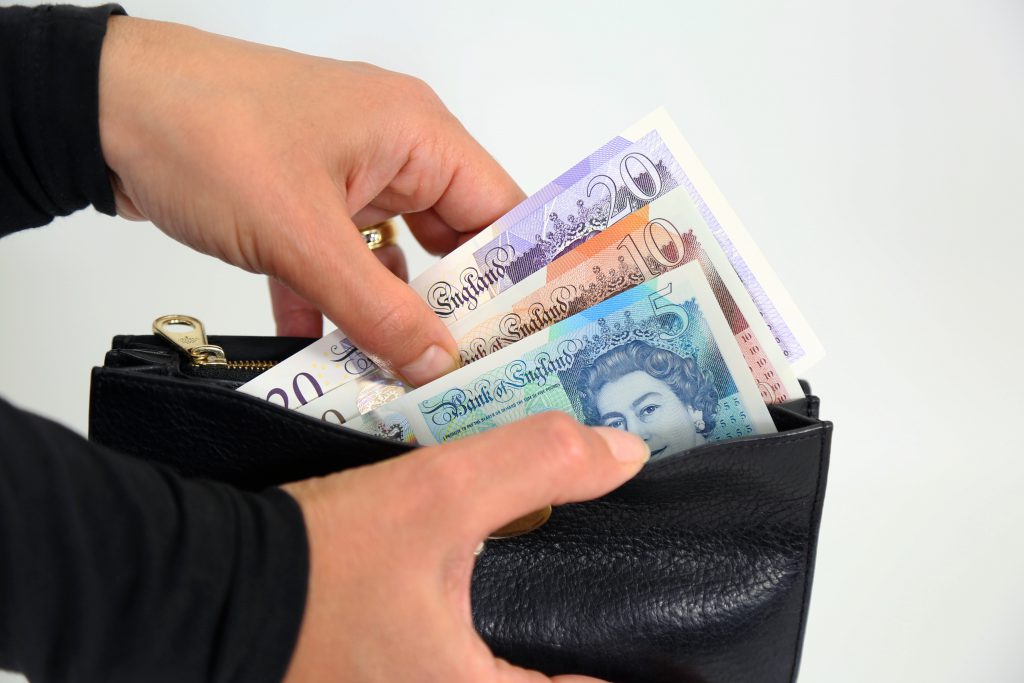
So now, three years on, and with the release of a second polymer note, as well as plans for the new polymer £20 and £50 notes, how much are your polymer banknotes really worth?
‘Rare’ polymer banknotes
AA01
In the early days following the release of the new notes, I’m willing to bet that every single person in the country checked theirs at some point to see if they were lucky enough to find one with the prefix AA01.
The annual Bank Of England charity auction held at Spink and Son Ltd in London auctioned off a polymer £5 note with the serial number AA01 000017 for £4,150, however the following year, a Jane Austen Polymer £10 note with the serial number AA01 000010 sold for a staggering £7,200 – over double the guide price!
Whilst these first run banknotes may be desirable to some collectors, we must remember that 1 million AA01 banknotes were actually printed for each denomination.
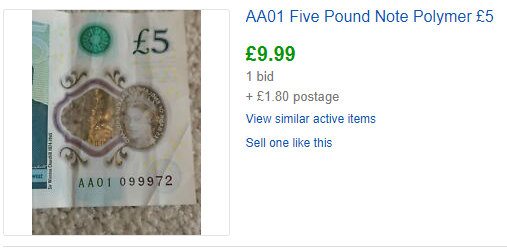
They aren’t likely to fetch much more than face value, and our latest eBay Tracker suggests that prices for AA01 banknotes are actually going down, with the previous figure for AA01 £5 notes dropping by £4.50 to £10.
The story is much the same with AA01 £10 notes, which were initially selling on eBay for between £40 and £70, but have now dropped considerably – from £18 last June to £15 in January 2019 (as taken from our eBay Tracker).
AK47
Considered collectable due to the machine gun connotations, polymer notes with the prefix AK47 were thought to be worth tens of thousands of pounds following the new £5 release in 2016.
This idea emerged after a £5 banknote with the prefix AK47 fetched a winning bid of £80,100 on eBay. Whilst the seller must have been overjoyed with the jackpot amount, it actually turned out the buyer had no intention of paying up.
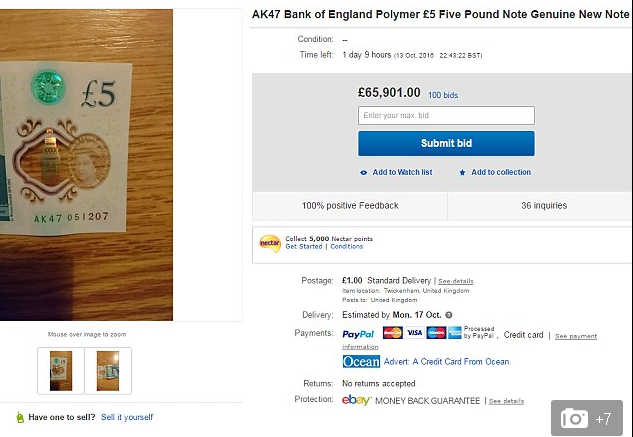
As exciting as a novelty serial number may be, there’s no way we could imagine paying anywhere near £80,000 for it! Could you?
A quick look at the most recent eBay sold prices for this serial number now show that people are willing to spend around £7.50 to get their hands on this note now, which we think is far more reasonable!
Whilst the same excitement picked up again following the polymer £10 launch in 2017, with some collectors paying between £20 and £40 for an AK47 £10 note, prices have again come down to a much more reasonable level, with AK47 £10 banknotes selling for around £15 on eBay now.

Sold listing on eBay for an AA01 £10 banknote in 2019
James Bond theme
Another novelty serial number collectors were searching for was the 007 James Bond theme.
This banknote, described as an “AK37 007 James Bond Bank of England Polymer £5 note” in a lovely condition, sold for £5,000 back in 2016.
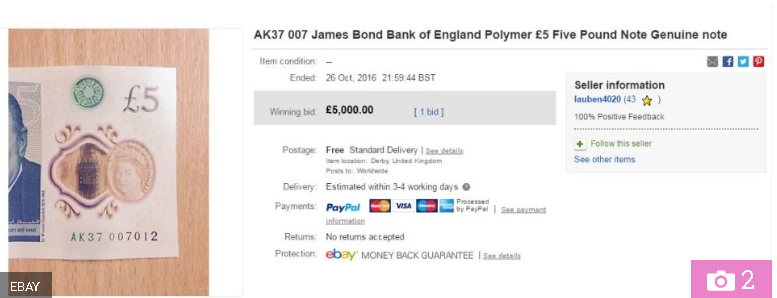
Although there must be plenty of James Bond fanatics out there, we can think of so many other items of James Bond memorabilia that fans could spend £5,000 on!
Whilst some chancers are still listing notes with 007 in the serial number for exaggerated prices on eBay, the sold listings reflect the fact that buyers just aren’t interested now that the hype has faded, with very few sold listings of the 007 £5 note and none of the 007 £10 note.
Key Jane Austen dates
In 2017, a polymer £10 note with serial number AH17 75 (the year of Jane Austen’s birth) sold on eBay for a whopping £3,600 – 360 times face value!
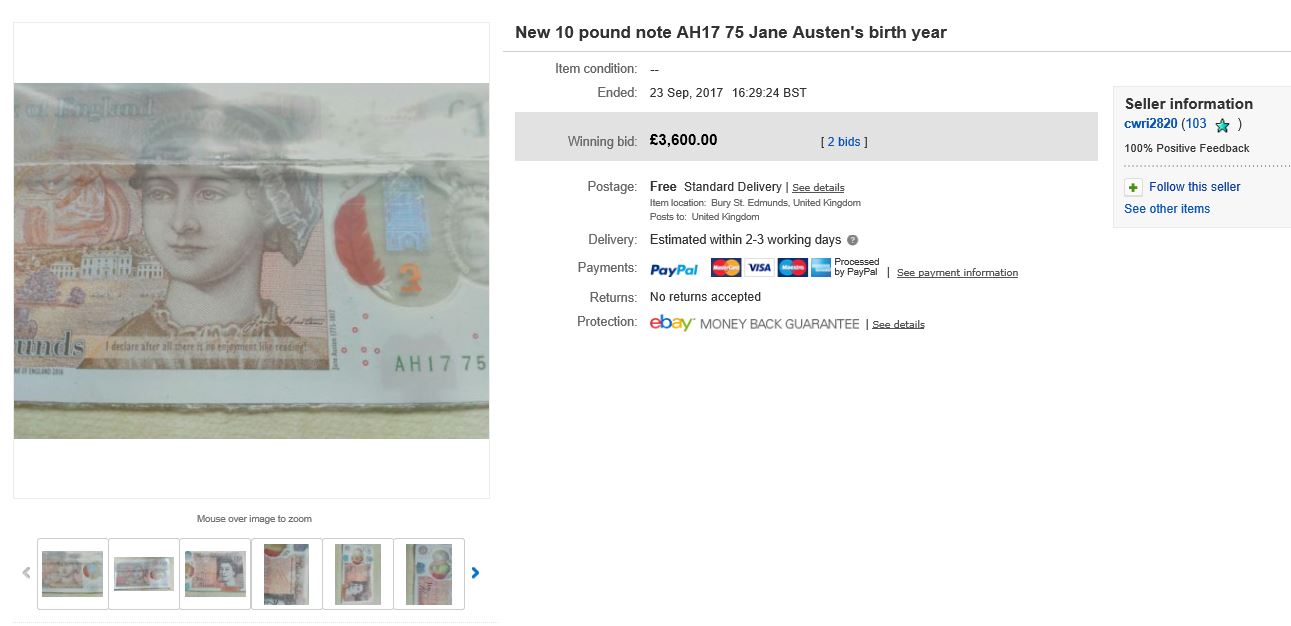
Key serial numbers collectors would be interested in include 16 121775 and 18 071817 which would represent the author’s date of birth and death respectively. Serial number 17 751817 would be her birth and death year combined.
Considering all the possible prefix variations that could accompany these serial numbers, there would be just 676 notes issued for each of the key dates mentioned above, from prefix AA through to ZZ.
Whilst these might become more popular with collectors in future, the initial excitement has now died down, with hardly any genuine Jane Austen birth or death date banknotes listed for sale on eBay anymore.
Genuine Rarities!
Jane Austen micro-engraving
In December 2016, specialist micro-engraver Graham Short came up with the idea of engraving a 5mm portrait of Jane Austen on the transparent part of the new plastic £5 notes.
He included a different quote around each one, ensuring that each note was unique.
According to Gallery owner Mr Huggins-Haig, artist Graham Short’s work has an insurance valuation of £50,000!
The first of four notes featuring art by specialist micro-engraver Graham Short was found in a cafe in South Wales, whilst another was found inside a Christmas card in Scotland. The third £5 note was found by a mystery old lady in Eniskillen in Northern Ireland who donated it to charity.
So that means there is just one more rare £5 note left to find with the handiwork of Birmingham micro-artist Graham Short…
For those of you hunting down the last remaining fiver, the serial number to look out for is AM 32 885554.
Harry Kane micro-engraving
As football fever hit the nation in the summer of 2018, Graham Short was at it once again, creating six unique £5 notes, each engraved with a tiny portrait of footballer Harry Kane with the inscription ‘World Cup Golden Boot Winner 2018’.
Two of the notes were given away – one to Harry Kane himself and the other to the FA – but the remaining four notes were distributed around the county and each note is insured for £50,000, so anyone lucky enough to get their hands on one can expect that sum if they auction off the fiver!
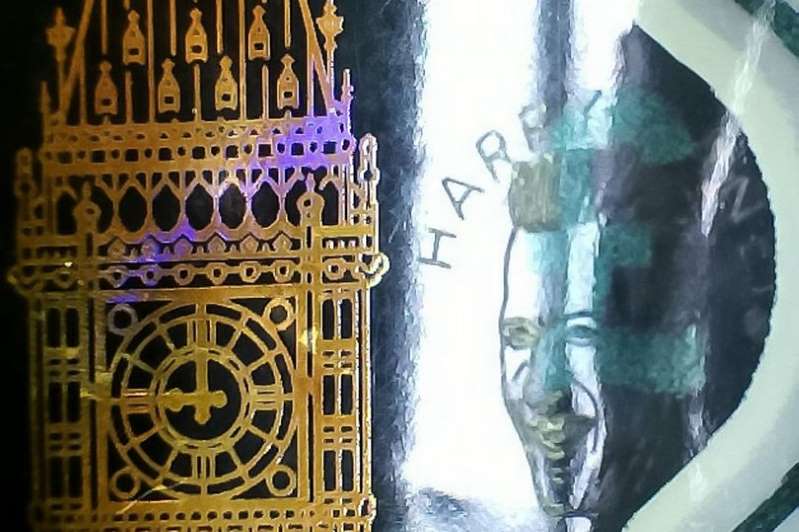
As of yet, we haven’t heard of these notes being found, so keep checking your £5 notes for the portrait of Harry Kane and look out for these serial numbers:
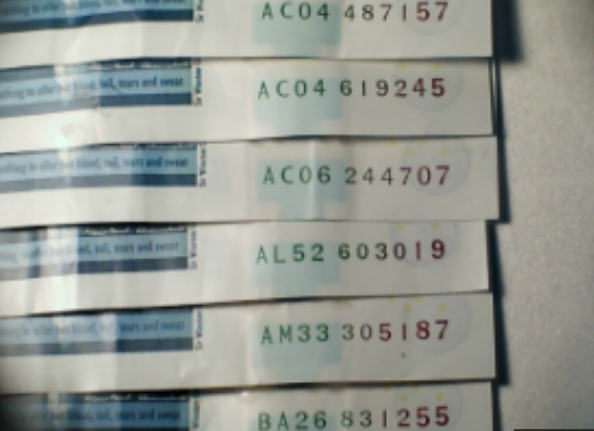
Serious Collectors: What to look for…
Generally, collecting banknotes is not about the serial number it possesses, but instead the chief cashier is of most interest, particularly on UK banknotes.
This is where real rarities can be found – in the form of Chief Cashier signatures.
Banknote designs rarely change but on average cashiers change every 5 or 6 years with some in the position for as little as 3 years.
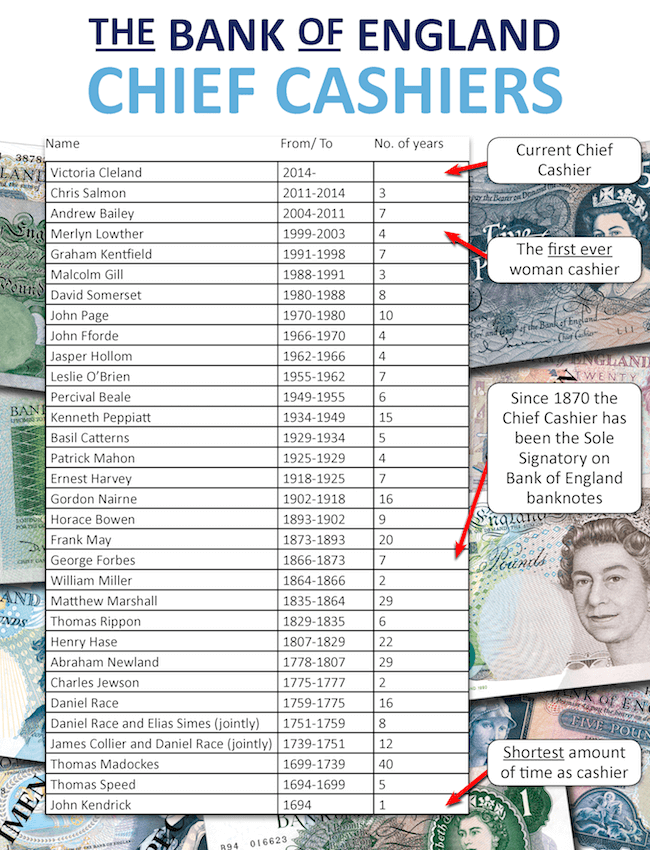
So if you are genuinely interested in collecting banknotes, the chief cashier is what you should really be looking for.
What about the £20 and £50 polymer notes?
The Bank Of England will be issuing a new polymer £20 note featuring
artist JMW Turner in 2020 and also plan to issue a £50 polymer note after this.
The £50 will feature someone who has contributed to science and the chosen person will be announced in summer 2019.
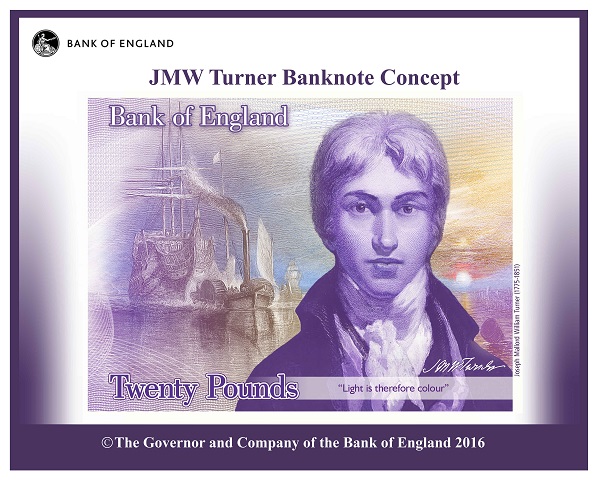
Are you a banknote collector and if so, which notes do you have in your collection? Let us know in the comments below!
If you’re interested in coin collecting, our Change Checker web app is completely free to use and allows users to:
– Find and identify the coins in their pocket
– Collect and track the coins they have
– Swap their spare coins with other Change Checkers
Sign up today at: www.changechecker.org/app
Did you know that the first 10p is actually 170 years old?
2019 marks the 170th anniversary of the Florin – a coin with a fascinating history, first issued during the reign of Queen Victoria in 1849.
Whilst you certainly wouldn’t recognise it as a 10p nowadays, it was actually Britain’s very first decimalised coin, with a value one tenth of a pound.
This experiment in decimalisation didn’t take off for almost another 120 years when the 5p and 10p coins were issued, however the Florin remained in circulation until 1970 when a final edition was issued for collectors.
The Godless Florin
For hundreds of years, right up until the present day, Britain’s coinage has been diligently pious, featuring a range of different Latin inscriptions, but almost all coins feature the full text, or an abbreviation of, ‘Dei Gratia, Fidei Defensor’ – ‘by the Grace of God, Defender of the Faith’.
All coins that is, except the original Florins issued in 1849…

The introduction of these Florins was met with immediate outcry from the strongly religious Victorians of the time and the coin gained the nickname ‘the Godless florin’.
It was even suggested that an outbreak of cholera that year was the act of a vengeful God, visiting death upon the British population as revenge for leaving Him off the new coin!
Queen Victoria herself even complained and coin was replaced, meaning that to this day, the 1849 Florin is one of the most infamous coin designs in British numismatic history.
The Gothic Silver Florin
In 1851, a new Florin was introduced, known as the ‘Gothic Florin’.
The coin earned its name from the distinctive Gothic-style inscription on the obverse side, surrounding the shields of the United Kingdom.

The inscription featured a combination of upper and lower-case letters and Roman Numerals to signify the date, which are both very unusual features for a British coin.
Another irregularity with the Florin was the crowned portrait of Queen Victoria, which would have been highly unusual to the public at the time, as this new denomination was the first coin to feature a crowned monarch for over 200 years.
The ‘Barmaid’s Ruin’ Florin
A second attempt to introduce decimal currency occurred in 1887 when the double Florin was issued, valued at 1/5 of a pound.
This coincided with the year of Queen Victoria’s Golden Jubilee, yet despite the joyful occasion, for many the coin was an unwanted addition to British currency and it did not receive a warm welcome from the public.

The real reason for its introduction is disputed, nevertheless it became Britain’s second ‘decimal’ coin, just 2mm smaller in diameter than the familiar Crown, yet worth a shilling less.
The unintended consequence was that the coin was often passed off as a Crown, with naïve barmaids apparently being the most susceptible to the deception.
It’s even been suggested that more than a few barmaids lost their livelihood on the grounds that they were losing the tavern owners money, hence the nickname ‘Barmaid’s Ruin’.
Creating the Gothic Head
The ‘Gothic Head’ featured on the Florin was first produced in 1847 by Royal Mint chief engraver, William Wyon, following the success of his ‘Young Head’ portrait.

Young Queen Victoria can be seen wearing an ornate crown, with a loose braid in her hair – the first time since the coins of Charles II that a monarch had been shown wearing a crown on British coinage.
Inspired by the revival of Gothic style throughout Victorian Britain, the new design also featured gothic style text used for the inscription .
The Gothic style influenced every aspect of Victorian life, from architecture, literature, clothing and coinage.
Even today, the gothic style can still be seen in British architecture, such as the Natural History Museum and the many Victorian churches that still stand today.
Do you have any Florins in your collection and what do you think about their gothic designs?
Own a collector’s favourite – The ‘Gothic’ Silver Florin
The Gothic Florin is a firm favourite with British coin collectors for its originality, and unique style. However, our stock of this classic coin is limited so please don’t delay your reservation!



